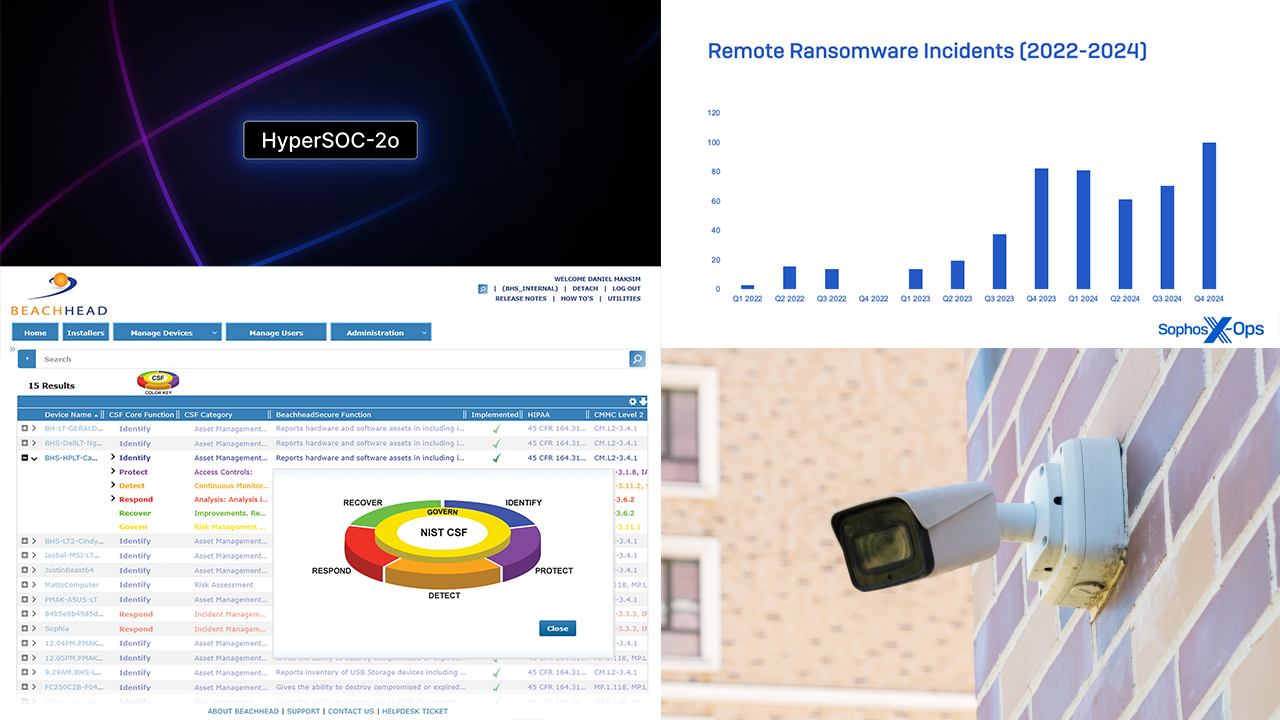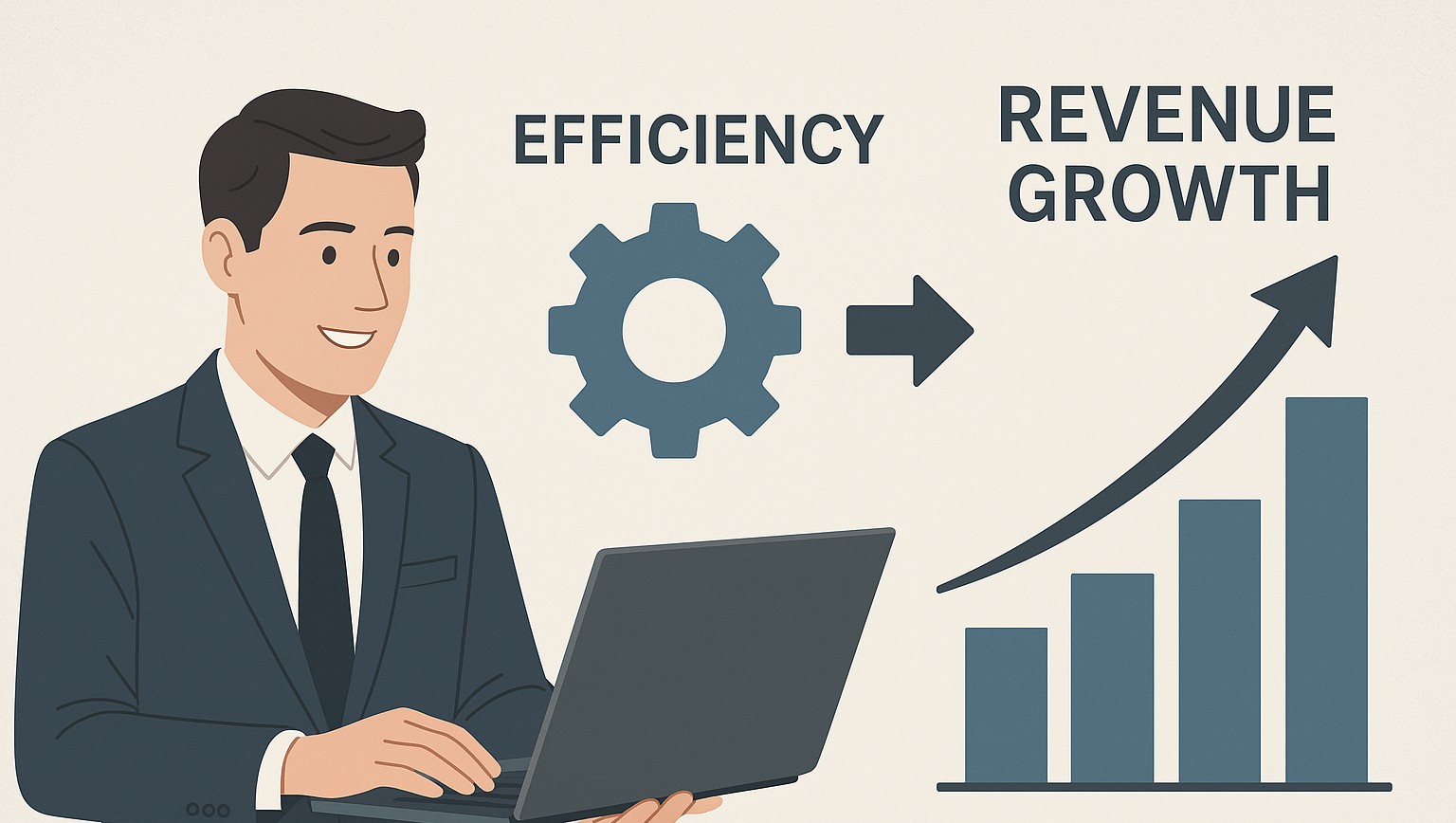A well-functioning sales team is critical to the growth and success of any MSP. This checklist helps you evaluate if you appropriately staffed your sales team. It also highlights areas where you may need more resources and ensures that your sales tools and processes are efficient.
Regular reviews will better align your sales efforts with your growth objectives, enabling your MSP to scale effectively.
Checklist Questions
1. Is My Sales Team Hitting My Monthly or Quarterly Sales Targets?
- Yes/No
- Specifics to consider:
- Assess whether you are consistently meeting or exceeding your sales targets. If not, evaluate whether this is due to staffing, lead generation issues, or market challenges.
- Review whether targets are realistic and aligned with your growth strategy.
- Compare your performance with industry benchmarks to ensure your targets are competitive.
- Impacts on current business:
- Failing to hit sales targets could indicate a need for more sales reps, better tools, or stronger sales strategies. It could also hinder your ability to forecast revenue and manage operational costs.
- Missed targets may lead to cash flow issues, especially if you’re relying on new clients to meet financial obligations.
- Future benefits:
- Hitting sales targets consistently enables your MSP to grow predictably, ensuring you have the necessary revenue to invest in new tools, technology, or staff.
- Consistent performance will build confidence with stakeholders and allow you to expand your operations smoothly.
2. Do My Sales Teams Have Enough Qualified Leads to Follow?
- Yes/No
- Specifics to consider:
- Evaluate the volume and quality of leads in your sales pipeline. Are your marketing efforts generating qualified leads, or are your sales reps spending too much time on cold leads?
- Review lead generation sources (e.g., inbound marketing, referral programs, partnerships) to see if they are effective or need adjustment.
- Impacts on current business:
- Unqualified leads can result in wasted time and underutilized sales resources, causing sales to stagnate.
- If your sales reps are forced to generate their own leads, this could reduce their productivity and focus on closing deals.
- Future benefits:
- Ensuring a steady flow of qualified leads will help your sales reps focus on what they do best — closing deals — rather than spending time on prospecting.
- A healthy lead pipeline will support your growth targets, enabling you to scale more rapidly without needing to hire more sales reps.
3. Are My Sales Reps Closing Deals Within the Expected Timeframe?
- Yes/No
- Specifics to consider:
- Measure the average time it takes for your sales reps to close deals. Compare this to industry benchmarks and your internal targets.
- Identify whether certain stages of the sales cycle are taking longer than expected and if this is due to sales staff performance or external factors.
- Impacts on current business:
- Long sales cycles can delay revenue recognition and strain cash flow, especially if you rely on new clients to cover operating expenses.
- Delays in closing deals can also lead to lost opportunities, as prospects may lose interest or go to a competitor.
- Future benefits:
- Faster closings improve cash flow and revenue predictability, which helps you plan for future growth and invest in new initiatives.
- A streamlined sales process ensures better client experience and increases the likelihood of repeat business and referrals.
4. Are There Consistent Delays or Bottlenecks in the Sales Process?
- Yes/No
- Specifics to consider:
- Review each stage of the sales funnel (e.g., lead qualification, proposal, negotiation) to identify where deals are getting stuck.
- Consider whether delays are caused by internal inefficiencies, lack of resources, or external factors such as client decision-making processes.
- Impacts on current business:
- Bottlenecks in the sales process can frustrate clients and cause deals to fall through, reducing your overall close rate.
- Internal inefficiencies, such as slow proposal generation or approvals, can waste valuable time and reduce the effectiveness of your sales team.
- Future benefits:
- Identifying and resolving bottlenecks can improve sales efficiency and lead to faster revenue generation.
- Optimizing the sales process allows your team to focus on high-priority deals, improving conversion rates and client satisfaction.
5. Do I Have Sufficient Sales Coverage for Different Industries or Regions I Want to Target?
- Yes/No
- Specifics to consider:
- Evaluate your sales team’s current coverage in terms of industries, regions, and verticals. Are there areas where you are underrepresented?
- Consider whether you need to hire specialized sales reps for specific industries or regions to maximize growth opportunities.
- Impacts on current business:
- Insufficient coverage could mean missed opportunities in high-growth industries or regions, limiting your revenue potential.
- Without proper coverage, your competitors may gain market share in key areas where your sales team is less active.
- Future benefits:
- Expanding sales coverage into new regions or industries will open up new revenue streams and diversify your client base.
- With dedicated sales reps focusing on high-potential verticals, your MSP can grow its presence and build expertise in key markets.
6. Is My CRM or Sales Automation Tool Up to Date and Fully Utilized?
- Yes/No
- Check if your CRM has unused features, and ensure it is integrated with marketing tools for lead management.
- Specifics to consider:
- Review whether your CRM is fully integrated with marketing automation tools, and whether it supports lead tracking, follow-ups, and performance reporting.
- Check if your sales reps are using the CRM to its full potential, including features like task automation, lead scoring, and reporting.
- Impacts on current business:
- Underutilized CRMs or automation tools can result in inefficiencies, missed opportunities, and an incomplete view of the sales pipeline.
- Failure to use the CRM to its full potential could mean lost data, missed follow-ups, and reduced conversion rates.
- Future benefits:
- A fully optimized CRM ensures a more organized and efficient sales process, improving lead nurturing, client communication, and deal tracking.
- Sales automation tools reduce manual work, allowing sales reps to focus on high-value activities like closing deals, ultimately improving productivity and revenue.
7. Are There Any New Sales Tools or Processes That Could Improve Efficiency (e.g., Automation, AI-assisted Prospecting)?
- Yes/No
- Specifics to consider:
- Research new tools, such as AI-driven prospecting, chatbot lead qualification, or automation platforms that can streamline the sales process.
- Evaluate whether your current sales tools allow you to track data in real-time, automate follow-ups, or prioritize leads based on engagement.
- Impacts on current business:
- Without new tools, your sales team may fall behind competitors who are using advanced technologies to increase efficiency and conversion rates.
- Outdated tools or manual processes could result in longer sales cycles, missed opportunities, or an inability to scale operations as demand grows.
- Future benefits:
- Implementing new tools like AI-powered prospecting can enhance lead generation, provide valuable insights into client behavior, and improve overall sales efficiency.
- Automation and data-driven tools reduce manual workload, allowing your team to handle a larger pipeline without adding new staff.
8. When Did We Last Audit Our Sales Tools and Processes to Ensure They Drive Optimal Efficiency?
- Date: __________
- Consider a quarterly or annual review of sales tools, workflows, and performance.
- Specifics to consider:
- Schedule regular audits to assess whether your current tools and workflows are still aligned with your sales goals. Consider how often tools like CRMs, marketing automation, or lead management platforms are being updated.
- Audit workflows to ensure that there are no inefficiencies in how leads are processed, tracked, and followed up on.
- Impacts on current business:
- Without regular audits, outdated tools or inefficient processes could slow down your sales team and cause missed opportunities for growth.
- A lack of optimization could lead to a longer sales cycle and decreased conversion rates, negatively impacting revenue.
- Future benefits:
- Regular audits allow you to stay agile and competitive, ensuring that your tools and processes continue to support efficient and effective sales operations.
- Optimizing sales tools and workflows can improve team performance, increase close rates, and support sustainable business growth.
9. When Did We Last Review Our Sales Team’s Staffing Needs?
- Date: __________
- Set a regular cadence — quarterly, biannually, or annually — to assess the team’s structure and workload.
- Specifics to consider:
- Conduct regular reviews of your sales team’s performance, workload, and overall capacity. Are the sales reps overworked, or is there room to take on additional leads and accounts?
- Compare your sales team’s performance with company growth goals to determine whether you need to hire additional reps to meet future demand.
- Impacts on current business:
- Failing to reassess your team’s structure could result in underperformance, missed revenue targets, or an inability to manage an expanding client base.
- Overworked sales reps may struggle to meet quotas, leading to higher burnout and turnover, which can disrupt your sales momentum.
- Future benefits:
- Regular reviews of staffing needs ensure that your sales team is right sized to meet growth objectives, reducing the risk of overextension or understaffing.
- Properly scaling your sales team will help you meet increasing demand, ensuring sustainable growth while maintaining high service levels.
Decision Outcome
If there are gaps in lead generation, slow close times, or underutilized tools …
Focus on optimizing processes, tools, and workflows before expanding the team. This will ensure that your current sales efforts are as efficient as possible.
If tools and processes are up to date, but sales performance is still lacking …
It may be time to hire more staff or bring in specialized sales reps to target new industries or regions.
Conclusion
Evaluating your sales team’s staffing levels, tools, and processes on a regular basis ensures that your MSP is positioned for growth. By considering the specifics of your sales operations, the impact on your current business, and the future benefits of optimization, you can make informed decisions that drive efficiency, boost sales performance, and align with your long-term business objectives.
ChannelPro has created this checklist to help busy MSPs streamline their decision-making process. This checklist offers a starting point for evaluating key business choices, saving time and providing clarity. While this checklist is designed to guide you through important considerations, we encourage you to seek additional references and professional advice to ensure fully informed decisions.
Featured image: iStock














